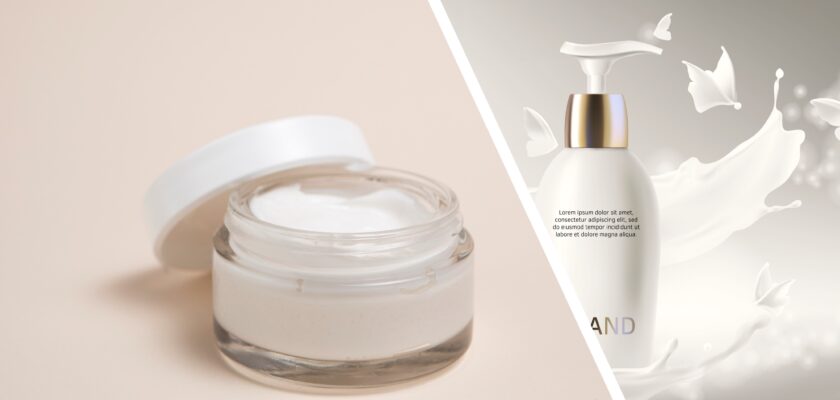There are jargons in every field, and the beauty industry is no different. The use of jargon can let us quickly communicate the characteristics of a product, but it’s important to keep in mind that not everyone knows the meaning of every term.
You likely have an arsenal of moisturizers in your skincare kit, but did you know they are most commonly categorized under three main categories: emollients, humectants and occlusive.
For all these 3 categories we use a common term as “Moisturizer” also these terms are also encompassed in an extensive variety of topical creams, gels, lotions, emulsion, and ointments.
You must understand the difference between moisturizers to choose the best one for your skin. We’ve put together this short post to help you understand the difference between these moisturizers’ emollients, humectants and occlusive.
What are Humectants?
Humectants are substances that attract water and promote moisture to hair and skin. Humectants contain essential characteristics when creating products to moisturize dry skin or hair.
Humectant water is pulled up from the dermis to the epidermis and stratum corneum. Furthermore, humectants can help hydrate the skin by drawing water vapor from the surrounding air if the humidity levels are high.
Who Should use Humectants Based Moisturizers?
People with oily skin or having acne-prone skin can use products that contain Humectants, because they are water-based, they won’t clog pores hence, they don’t leave any sort of film behind.
Humectants are also good for plumping up sagging skin as well as fine lines, hydrating products are great. Just avoid using these products during winters if you have dry skin as they will pull the hydration to top layer skin, and it might evaporate.
Humectants Consist in Following Products
- Vegetable glycerin
- Sorbitol
- Hyaluronic acid
- Lecithin
- Urea
- Amino acid
- Peptides
- Sugar alcohol
- Honey.
Quick Tips
Hydrators / Humectants:
- Water-based, oil-free products.
- The best hydrating products are serums containing Hyaluronic Acid & glycerin.
- Make wrinkles look less visible by binding water to the top layers of the skin.
- Hydration is a necessity for all skin types, but especially beneficial for acne-prone skin.
Products Contains Humectant Moisturizer
CeraVe Moisturizing Cream
What is Emollient?
Emollients have some occlusive qualities, but their primary purpose is to soften the skin. The spreadability of emollients on the skin can vary widely. When formulating a product, the choice of selecting the emollients will have a significant impact on how it will feel on the skin.
Think of emollients as healthy foods for your skin; they nourish and soften your skin. The majority of emollients tend to feel good on the skin and are frequently sold as single ingredients or as combinations. The use of an emollient product is beneficial for almost everyone.
Who Should Use Emollient Based Moisturizers?
People with acne-prone skin or oily skin should try to avoid these products that consist of comedogenic emollients like avocado oil, coconut oil. These people should only use products with non-comedogenic emollients like jojoba oil, squalane safflower oil, to avoid clogged pores and acne breakouts.
Emollient Consist in Following Products
- Butters
- Oils
- Esters
- Lipids
- Fatty acids
- Ceramides
Products Consist Emollients
SKINCEUTICALS Triple Lipid Restore 2:4:2

La Roche-Posay Lipikar Balm AP+

What is Occlusive?
Having an occlusive ingredient creates a physical barrier that locks moisture in the skin or hair. Zinc is mostly used by lifeguards on their nose looking bright white, or it is also used in diaper ointment.
The physical barrier created by zinc is an excellent example of an occlusive ingredient. This barrier doesn’t allow moisture to escape very well, and it can’t penetrate. These ingredients feel heavy and do not feel good, so you are highly unlikely to find them alone in a hair or skin care product, even zinc is paired with emollients.
Who Should Use Occlusive Products?
People suffering from skin conditions such as eczema or extremely dry, itchy skin should consider wearing occlusives. When applied too thickly or on skin that is already oily, these products can create a physical barrier that clogs pores and leads to breakouts.
Occlusive moisturizers, in particular, are useful during the dry winter months as dry air accelerates water loss from the surface of the skin, leaving it dehydrated. The physical barrier created by occlusives prevents water loss and strengthened barrier function.
Occlusive Consist in following Products
- Petrolatum
- Mineral oil
- Lanolin
- Waxes
- Silicones
Products Consist Occlusive
Chemist Confessions Balm Voyage Soothing Occlusives

What Type of Moisturizer Should I Use for my Skin?
Now you have read above the difference, advantages and disadvantages and its benefits of humectant, emollient, and occlusive moisturizers. It will be easier to figure out what type of moisturizer to use. An occlusive will lock moisture in, the humectant will draw moisture into the skin, and the emollient will ensure that it stays soft and smooth.
Difference Between Emollient, Humectant, Occlusive


